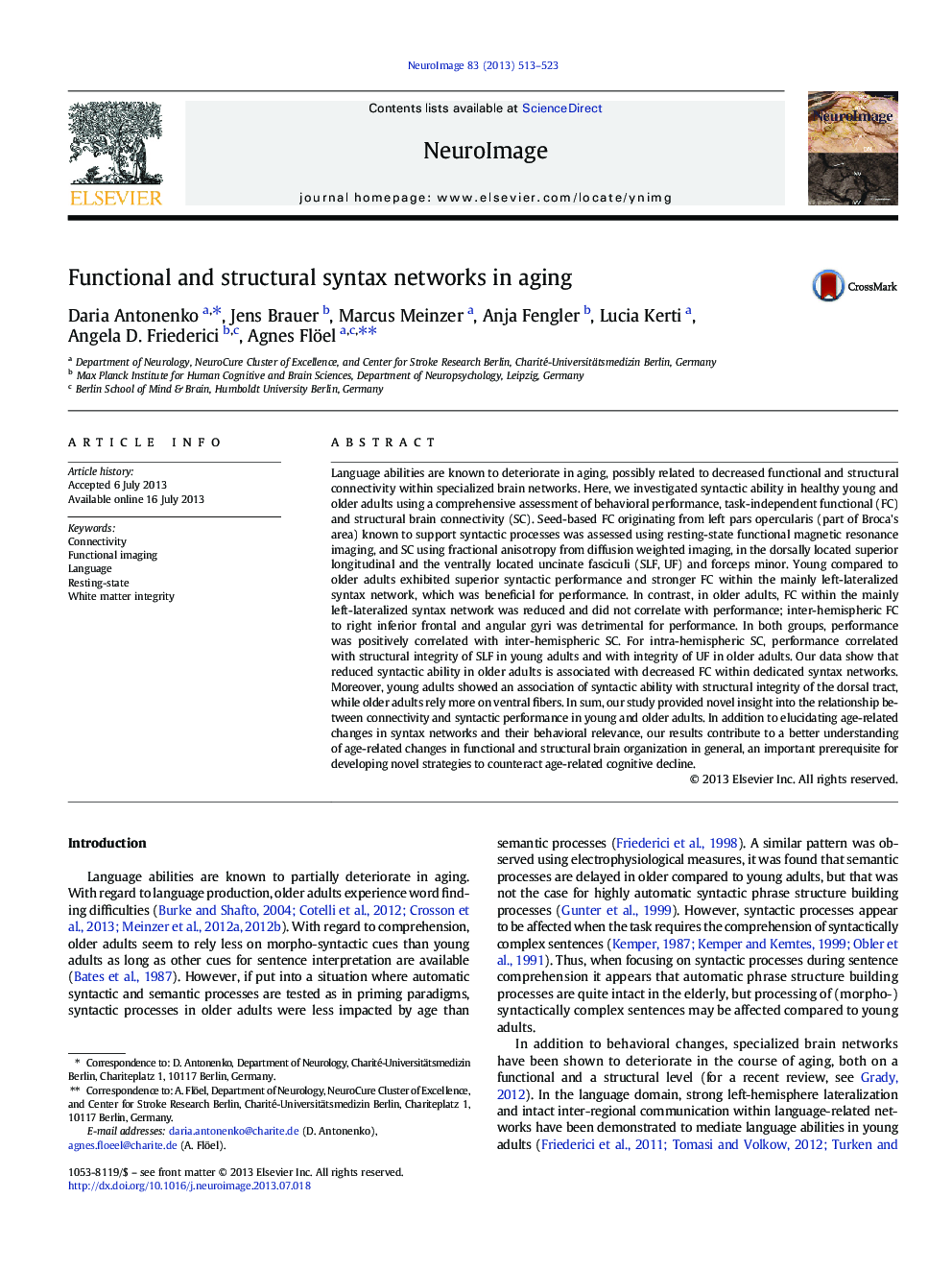| Article ID | Journal | Published Year | Pages | File Type |
|---|---|---|---|---|
| 6028168 | NeuroImage | 2013 | 11 Pages |
Abstract
Language abilities are known to deteriorate in aging, possibly related to decreased functional and structural connectivity within specialized brain networks. Here, we investigated syntactic ability in healthy young and older adults using a comprehensive assessment of behavioral performance, task-independent functional (FC) and structural brain connectivity (SC). Seed-based FC originating from left pars opercularis (part of Broca's area) known to support syntactic processes was assessed using resting-state functional magnetic resonance imaging, and SC using fractional anisotropy from diffusion weighted imaging, in the dorsally located superior longitudinal and the ventrally located uncinate fasciculi (SLF, UF) and forceps minor. Young compared to older adults exhibited superior syntactic performance and stronger FC within the mainly left-lateralized syntax network, which was beneficial for performance. In contrast, in older adults, FC within the mainly left-lateralized syntax network was reduced and did not correlate with performance; inter-hemispheric FC to right inferior frontal and angular gyri was detrimental for performance. In both groups, performance was positively correlated with inter-hemispheric SC. For intra-hemispheric SC, performance correlated with structural integrity of SLF in young adults and with integrity of UF in older adults. Our data show that reduced syntactic ability in older adults is associated with decreased FC within dedicated syntax networks. Moreover, young adults showed an association of syntactic ability with structural integrity of the dorsal tract, while older adults rely more on ventral fibers. In sum, our study provided novel insight into the relationship between connectivity and syntactic performance in young and older adults. In addition to elucidating age-related changes in syntax networks and their behavioral relevance, our results contribute to a better understanding of age-related changes in functional and structural brain organization in general, an important prerequisite for developing novel strategies to counteract age-related cognitive decline.
Related Topics
Life Sciences
Neuroscience
Cognitive Neuroscience
Authors
Daria Antonenko, Jens Brauer, Marcus Meinzer, Anja Fengler, Lucia Kerti, Angela D. Friederici, Agnes Flöel,
